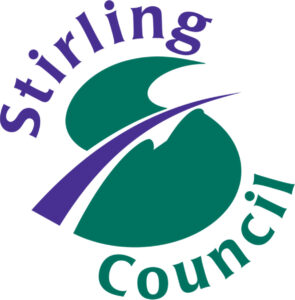Question 1
Which of the following best reflects your view on the changes proposed above regarding when judges can refuse bail:
A) I agree with the proposed change so that judges can only refuse bail if there are public safety reasons for doing so
B) I disagree with the proposal and think the system should stay the same as it is now, so judges can refuse bail even if public safety is not one of their reasons for doing so
C) I am unsure
Please give reasons for your answer.
Social Work Scotland (hereafter SWS) supports this proposal in principle but is subject to caveat.
If there are no public safety reasons it is too simplistic to conclude that there are no concerns about a negative impact on a victim(s). However, ‘public safety is not adequately defined in the consultation. Whilst there will be some common understanding of the term, clarification is required as to whether this includes, for example, psychological factors such as fear and alarm caused by an individual remaining in the community that will have a negative impact on a victim even if there is no tangible physical risk of harm. Trauma can be created simply by the victim knowing an alleged perpetrator has been granted bail. Would, for example, an accused person repeatedly breaching a bail condition not to contact an alleged victim constitute a ‘public safety reason? There may or may not be threats or intimidation involved but this may have a tangible impact on the victim.
Therefore, a fuller definition is required before SWS can agree with (A) so there is the confidence that there will be no negative consequences for victims. SWS would be willing to work with relevant bodies, including victim’s organisations and the Third sector to agree on this.
It is also legitimate to ask whether current arrangements are sufficient and judges have the right information and assessments upon which to determine risk and whether or not, therefore, there are public safety reasons.
Prison is expensive and SWS has consistently argued that it should be reserved only for the most dangerous individuals. We agree with The Scottish Prisons Commission which “recommends that imprisonment should be reserved for people whose offences are so serious that no other form of punishment will do and for those who pose a threat of serious harm to the public” (p3, July 2008). We refer below to the detrimental impact of a custodial environment and suggest the same arguments apply for remand.
Question 2
Which of the following best reflects your view on the changes proposed above regarding how judges consider victim protection when making decisions about bail:
- A) I agree with the proposed change, so judges should have particular regard for the aim of protecting the victim(s) when making bail decisions.
- B) I disagree with the proposal and think the system should stay the same as it is now, where judges consider victim protection as part of the overall decision-making
- C) I am unsure
Please give reasons for your answer.
Whilst there is a competing balance to be struck in the rights of the alleged offender and victim if we are to ensure everyone has the right to feel safe in their community, and especially victims, and the latter is to be put at the heart of justice, this is essential. It ensures transparency and holds judges accountable for their decisions and for considering the impact on the victim(s) and risk management planning – the safety of victims is of paramount importance.
In order to make this decision, however, judges need to have comprehensive information to inform this. We refer to our comments in Q1 regarding the need for judges to have the right information to make informed decisions on risk. We argue at Q5a that where bail is opposed that the court must ask for information from social work and this must be provided. Concerns relating to domestic abuse, child protection and adult, support and protection issues, for example, which may not always be apparent from an accused person’s previous convictions would be considered and contained in the information supplied by court justice social work services.
A bail assessment by the court justice social work service, bail supervision by JSW and electronic monitoring for bail all potentially provide protective measures for victims. Additionally, one of the explicit objectives of bail supervision is to pro-actively provide appropriate support to individuals in the community potentially contributing to the rehabilitative process.
Question 3
To what extent do you agree or disagree that the court should be empowered to make decisions on the question of bail in all cases using a simplified legal framework?
- Strongly agree
- Somewhat agree
- Somewhat disagree
- Strongly disagree
Please give reasons for your answer.
This would simplify the question of bail and promote consistency but still retain the necessary protections. SWS supports this as a principle but would wish to understand better what is being proposed before we could ‘strongly agree’. We would be willing to contribute to designing this simplified legal framework.
Question 4
Judges must give the reasons when they decide to refuse bail to an accused person. Which of the following best reflects your view on how those reasons should be communicated:
- A) I agree with the proposed change, so judges must give reasons both orally and in writing
- B) I disagree with the proposal and think judges should continue to give reasons orally only
- C) I am unsure
Please give reasons for your answer.
Notwithstanding SCTS’ written submission that recording reasons might be prejudicial to the accused, SWS support this proposal. Currently, data simply doesn’t exist that can be usefully analysed as to why judges refuse bail. Being able to gather and analyse this data would help to ensure an understanding of the reasons, how tests of public safety are being applied, for example, and promote consistency in decision making.
The court arena is imposing and intimidating; it does not reflect a trauma-informed approach. Taking in information is difficult under such conditions. Recording information would reflect a greater human rights-based approach and be unambiguous and provide a point of reference.
Question 5a
When a court is considering bail decisions, which of the following options do you consider preferable…
- …in cases where the prosecution opposes bail:
- -The court may ask for information from social work but is not obligated to. Social work may decide whether to provide it
- -The court must ask for information from social work. Social work may decide whether to provide it
- –The court must ask for information from social work. Social work must provide it
Please give reasons for your answer.
SWS supports the proposal that the court must ask for information from social work and social work must decide whether to provide it.
Local authorities will often hold extensive information about individuals across the various social work disciplines that could help to better ensure the judge has all relevant information to hand in order to make an informed decision as to the correct decision regarding bail. This may obviate the need for remand in some cases and lead to increased use of bail supervision and electronic monitoring for bail (where appropriate). It would also remove the postcode lottery that exists where some courts are predisposed to seeking bail information from social work, for example, assessments for bail supervision, and those that aren’t.
However, ensuring a court social work service is available will require an understanding of the resource required to deliver this. Currently, a service cannot be guaranteed to be available across the court estate, especially in remoter rural and island areas. For example, some courts have located some distance from the justice social work office and the provision of court services is often restricted to certain days e.g. busier days such as interim and sentencing diets. Therefore, requiring social work to provide information may entail delays to court business – in one mainland example, a justice social work office is located 25 miles from the sheriff’s court. The challenges for island authorities is greater. Information could be provided by other means such as telephone or by videoconference in order to mitigate the risk of inequity of service. However, it must be acknowledged that this approach might engender potential human rights issues for individuals and we would argue for resources to be invested to ensure fair and equal access for all.
Moreover, whilst the Criminal Justice Social Work Report Guidance (Scottish Government 2010) states “Local authority CJSW managers must take the necessary steps to provide an adequate court-based social work service” there is no legal basis that requires the local authority to provide a court-based service. When resources are limited, local authority CJSW managers will have tough choices to make and providing an onsite or readily available court service Monday – Friday may not be viable if demand does not warrant it.
If the proposal requires the court to obtain information, both funding and the legal position should be considered. Consideration would also require to be given to how this would work practically to avoid the impact on courts and unnecessary delays. Providing information to the court social work service will invariably require the accused person to be interviewed and may require other enquiries to be conducted, including a home visit. (SWS has already made it clear that for practical reasons it will not always be possible to provide electronic monitoring for bail assessment on the day of the court where a home visit is necessary.)
A must/must would potentially be time-consuming but it would be ethical and would ensure fairness and equitability. There would require to be clear agreements for the provision of information from the Crown Office & Procurator Fiscal Service.
Moreover, there would also require to be consideration of ‘what’ information. Current bail supervision guidance sets out a specific list of factors to be taken into account (National Guidance on Bail Supervision, para 7.4, pp 3-4, 2019). Is the same information required or a different set of questions?
Question 5b
When a court is considering bail decisions, which of the following options do you consider preferable…
…in cases where the prosecution is not opposing bail:
–The court may ask for information from social work but is not obligated to. Social work may decide whether to provide it
-The court must ask for information from social work. Social work may decide whether to provide it
-The court must ask for information from social work. Social work must provide it
Please give reasons for your answer.
This question is challenging given the overwhelming resource implications of a must/must response due to the potential volume; however, this would be the only way of ensuring consistency. But it raises issues of net-widening and practical cross-boundary issues where a person is appearing before a court in one local authority area but lives in another and ready access, therefore, to information.
It is possible social work may hold information that would bring into question the prosecution position of not opposing bail e.g. information and intelligence concerning domestic abuse that has come to light during the course of a community payback order or through Multi-Agency Task & Coordination (MATAC) and Multi-Agency Risk Assessment Conferences (MARAC) meetings.
Similar to 5a, SWS consider there is merit in the proposal that the court ‘must’ ask for information but for reasons of proportionality we think this is potentially unworkable due to volume and also because currently social work cannot guarantee to provide a bail service in every court on every day of the week. Therefore, on balance, the court ‘may’ ask and social work ‘may’ provide it is the better option. This does not preclude social work from taking a proactive approach where we think there is information that will assist the court, including suitability for bail supervision, which would enhance the period of bail, particularly where conditions of bail are being considered.
An alternative approach might be to suggest where bail is unopposed but specific conditions are proposed to request that social work must respond in those circumstances; or if the court is not obligated to ask for information but does so (i.e. ‘may’), which would suggest there is a specific reason(s) for this, that social work ‘must’ respond in those instances.
The significant caveats regarding resources also apply as for 5a.
Question 6
To what extent do you agree or disagree that courts should be required to consider Electronic Monitoring before deciding to refuse bail
Strongly agree
Somewhat agree
Somewhat disagree
Strongly disagree
Please give reasons for your answer.
Whilst there is a risk that electronic monitoring is seen as a panacea to solve many justice-related problems, nevertheless where it is assessed as appropriate and proportionate and, crucially, it is considered alongside the provision of support (bail supervision, for example) it may allow for a cohort of individuals to avoid being remanded and it would arguably provide an additional layer of protection in ensuring public safety. As we argue in Q11 & 12 in respect of age, this might be a particularly useful option for young people, and in keeping with a rights-based approach and the recent Scottish Sentencing Council “Sentencing young people: Sentencing guideline”. It may also potentially reduce the number of young people on remand in HMYOI Polmont, a Scottish Government priority and extend options for young people who might otherwise be placed in secure accommodation to remain in the community.
Therefore, SWS strongly agree with this proposal.
The Scottish Government’s Electronic Monitoring working group considered research evidence suggesting that electronic monitoring is likely to be more successful when used alongside support to the individual. Whilst it is right that support is not always necessary, SWS would suggest that where the court is considering electronic monitoring a bail supervision assessment is requested alongside this to assess the need for support.
The Scottish Centre for Crime and Justice Research report, ‘Scottish and International Review of the Uses of Electronic Monitoring’ (Graham, H. & McIvor, G. No 8/2015) showed that electronic monitoring achieved greater compliance with bail conditions, and is more effective when accompanied by wider programmes of supervision and support, rather than being used as a stand-alone measure. It is also significantly cheaper.
Currently, electronic monitoring is delivered through Radio Frequency (RF) technology in Scotland. Whilst this can be set up to protect victims through an ‘away from’ condition, the implementation of Global Positioning Satellite (GPS) tracking would enhance the options available and allow zones to be set up to protect victims and which are far more responsive. SWS encourages the implementation of GPS tracking at the earliest opportunity.
As with many of the proposals contained in the consultation, there are resource implications. Whilst it is possible to attempt to estimate the quantitative impact of an increase in bail supervision and predict to an extent the demand for electronic monitoring for bail assessments, SWS urges caution in basing this on the current unit cost attributed to bail supervision. This is understood to be £5,001 calculated by dividing total recorded expenditure on Bail Supervision across the 8 Community Justice Authorities (now disbanded) by the volume of cases commenced in 2015-16. This is out of date and a less than robust means to determine a unit cost. Consideration should be given to reassessing the unit cost figure. (This equally applies to the range of services provided by justice social work as the unit costs are all calculated in the same way. SWS welcomes the Scottish Government’s intention to consider this as part of a Community Interventions Costs Project in 2022.)
Question 7
When does a court decide to refuse bail, to what extent do you agree or disagree that they should have to record the reason they felt electronic monitoring was not adequate in this case?
- Strongly agree
- Somewhat agree
- Somewhat disagree
- Strongly disagree
Please give reasons for your answer.
This links to our response to Q4. It will ensure accountability, make clear and explicit the rationale and with the right information provided to ensure judges are able to make an informed decision, maximise the potential use of the electronic monitoring option.
Question 8
To what extent do you agree or disagree that time spent on bail with electronic monitoring should be taken into account at sentencing?
- Strongly agree
- Somewhat agree
- Somewhat disagree
- Strongly disagree
- Please give reasons for your answer.
Whilst this would provide a powerful incentive in terms of compliance, more importantly, it would recognise the additional restriction imposed as a result of electronic monitoring. As suggested in the consultation document, it would move to bring this in line with other jurisdictions and providers for greater consistency given the case law referred to (McGill v HM Advocate, 2014 S.C.C.R. 46).
However, consideration would need to be given to the length of community-based sentences that may subsequently be made to ensure that meaningful, relationship-based interventions can take place and that there is sufficient time to complete programme work to address issues and reduce risk to prevent the pitfalls of short-term custodial sentences being repeated with community sentences.
Question 9
If the time on electronic monitoring is to be taken into account at sentencing, to what extent do you agree or disagree that there should be legislation to ensure it is applied consistently:
- Strongly agree
- Somewhat agree
- Somewhat disagree
- Strongly disagree
Please give reasons for your answer.
This would be simple and transparent, removing any dubiety about how this is applied.
However, there is a related issue about the consistency of interpretation of this question and the preceding question. Is the intention that where a person breaches the electronic monitoring condition it automatically excludes them and to what extent the nature of the breach is considered or not i.e. is it intended to be a simple binary application or where, for example, there is a minor infringement there might be latitude to not take this into account (in much the same way that Home Detention Curfew operates). Or is the intention that an assessment of compliance, including engagement and response, is considered? If this was the case, and we suggest it should be, decisions about taking compliance into account must be person-centred and determined on a case-by-case basis and based on a written assessment. SWS are willing to contribute to defining what this assessment contains.
Question 10
Based on the information above, please use this space if you would like to make any comments about the idea of a law in Scotland that would prevent courts from remanding someone if there is no real prospect that they will go on to receive a custodial sentence in the proceedings.
SWS argues that regardless of the evidence (as presented), enshrining in law that remand should not be used where there is no real prospect of a custodial sentence is an important and fundamental principle. It would add a check and balance and would focus the minds of judges but, crucially, does not remove discretion as to its application.
The Howard League Scotland report, The Scandal of Remand in Scotland (May 2020) provides compelling evidence underpinning its conclusion that “A significant proportion of people who are convicted after being remanded in custody thus receive a non-custodial sentence” (Section 1, F). As the report highlights the impact of remand is similar to short-term custodial sentences: “The negative consequences for those imprisoned on remand are very like the effects for those serving short-term custodial sentences, impacting their physical and mental health, employment, housing, and family relationships. Additionally, remand causes financial repercussions for the individual if they are subsequently acquitted or receive a non-custodial sentence (Section 4).” Avoiding the unnecessary negative consequences of remand should, therefore, be an important policy goal.
It brings into question the efficient and effective use of public resources – if there is no real prospect of a custodial sentence, why would a court consider this with all the resulting cost, both financially and in respect of the detrimental impact on an individual’s life (e.g. loss of employment, separation from children).
Moreover, it is well known that women on remand are overrepresented in the overall female prison population and fewer women receive custodial sentences when sentenced.
For young people, it is even more acute. Scottish Prison Service statistics for 17 January 2022 show that for 16 – 17 years olds 11 were untried, 1 is convicted awaiting sentence and 3 are sentenced. The Children and Young People’s Centre for Justice (CYCJ) report ‘Use and impact of bail and remand with children in Scotland’ (McEwan. D et al, December 2020) makes important points and SWS agrees with the CYCJ interim improvement proposal that was “a period of remand is the only option, this should be to a secure unit if legally viable and for the shortest time possible.”
Question 11
To what extent do you agree or disagree that legislation should explicitly require courts to take someone’s age into account when deciding whether to grant them bail?
- Strongly agree
- Somewhat agree
- Somewhat disagree
- Strongly disagree
Please give reasons for your answer. If you agreed, how do you think age should be taken into account when deciding whether to grant someone bail?
The key factor in determining any consideration of remand is public safety and imminent risk of serious harm. This applies to all ages.
However, the Scottish Sentencing Council (SSC) “Sentencing young people: Sentencing guideline” which comes into effect in January 2022 sets an important precedent for sentencing young people. Courts will be encouraged to remit to the children’s hearings system for under 18s and adopt a more individualistic approach to the sentencing of those under 25 to support rehabilitation and help to reduce reoffending. The compelling evidence underpinning the guidance is contained in ‘The development of cognitive and emotional maturity in adolescents and its relevance in judicial contexts’ (O’Rourke, A et al, Literature Review submitted to the SSC January 2020, published February 2020). In short, the review contains compelling evidence that the brain continues to develop until at least age 25 and it is therefore relevant in a judicial context to “Consider an adolescent’s culpability, relative to their cognitive maturity and linked ability, during sentencing” (pp 58).
It is logical, therefore, to apply the same test to remand given, as alluded to in our answer to Q10, the similar impact of this on individuals to a short-term custodial sentence. It would also reflect the United Nations Convention on the Rights of the Child which states unequivocally “No child shall be deprived of his or her liberty unlawfully or arbitrarily. The arrest, detention or imprisonment of a child shall be in conformity with the law and shall be used only as a measure of last resort (emphasis added) and for the shortest appropriate period of time” (UNCRC, Article 37 1990).
If someone’s age is taken into account, and this was up to 25, there is the possibility of an impact on court business due to volume. However, one obvious way to proceed with the ‘how’ would be to request a bail assessment from justice social work in all cases although the form of this may need to be considered (see Q4). This would always be informed by taking into account all social work records relating to a young person, including where the local authority has corporate parenting duties. As with many of the proposals in the consultation, there would need to be consideration given to the capacity of the existing workforce, which is likely to require significant investment.
Question 12
In principle, to what extent do you agree or disagree that courts should be required to take any potential impact on children into account when deciding whether to grant bail to an accused person?
- Strongly agree
- Somewhat agree
- Somewhat disagree
- Strongly disagree
Please give reasons for your answer. Do you have any comments on how such a requirement could best be brought in?
It is important that a court has comprehensive information to inform decision making. The impact on children should form part of that and has particular resonance where remand is being considered. Just as for individuals being sentenced, the likely impact of remand on both the individual and his or her family should be considered. This is routinely considered as part of a criminal justice social work report, for example. It must also be acknowledged that people, including young people, often have caring responsibilities for others and the wider impact of children being remanded in custody has to be considered.
Adverse childhood experiences (ACEs) encompass various forms of physical and emotional abuse, neglect, and household dysfunction experienced in childhood. It is likely that experience in a custodial setting may add to or re-traumatise a young person.
Would the young person find remand difficult to cope with and be at an increased risk of self-harm or present a risk to others? Scottish Prison Service data indicates that from 2014-2021, 21 young people aged 25 or under died in SPS custody, with 13 confirmed as suicide (the remainder were undetermined causes [3]; drug-related [3], natural cause [1], and homicide [1]).
The youth justice priorities outlined in The Promise are clear. It states specifically that by 2024, 16 and 17-year-olds will no longer be placed in Young Offender Institutes for a sentence or on remand; and there will be sufficient community-based alternatives so that detention is a last resort (Plan 21-24, p 23).
As Armstrong and McGhee succinctly state, “Young people in detention have heightened risks and needs compared to young people outside of prison: A common finding in the literature is that young people in custody have higher rates of suicide in custody and also higher rates of factors associated with self-harm and suicide including depression, anxiety disorders, psychotic symptoms, ADHD and more. There also is some evidence that young people who experience custody are more vulnerable than young people in the general population with histories of abuse, time spent in care, histories of violence and mental health issues prior to detention” (Armstrong, S & McGhee, J Mental Health and Wellbeing of Young People in Custody: Evidence Review. Project Report. Scottish Centre for Crime and Justice Research, Glasgow 2019).
As for Q11, this could be included as part of a bail assessment from justice social work.
Question 13
To what extent do you agree or disagree that, in general, enabling a prisoner to serve part of their sentence in the community can help their reintegration?
- Strongly agree
- Somewhat agree
- Somewhat disagree
- Strongly disagree
Please give reasons for your answer.
SWS considers that, at best, the current sentencing framework is opaque, including the range of different sentence types and licences. It is often misunderstood or misinterpreted by justice professionals and prisoners alike and, therefore, it is reasonable to assume this would be more so for the general public. For determinate short-term sentences, a person sentenced to, say, 24 months is automatically released after 12 months. Whilst an individual can be recalled to prison post-release to serve the remainder of their sentence if, for example, they are arrested and charged with a new offence, this is not necessarily obvious and creates an unintended impression of leniency.
Any length of prison sentence is disruptive, often with a negative impact, and SWS considers that prison should be reserved for those individuals who are assessed as posing a serious risk of harm. This is rarely the case for short-term prisoners where the majority will be serving sentences for less serious crimes.
In other jurisdictions, an approach is taken to seek to reduce time in custody. For example, in Ireland, the community return scheme (CRS) operates. Individuals serving sentences of between one and eight years can be liberated prior to their estimated date of liberation and undertake work in the community, similar to that of a community payback order and under supervision. This ensures communities can benefit from such restorative approaches, and there is the potential for individuals to develop skills and training to improve employment and/or education prospects. This can reduce further offending, unnecessary costs and remove the burden on the prison estate.
Whilst in principle SWS strongly agrees with this question, changes are required before we could fully support it. For example, the significant change would be required in how a prisoner is assessed during the course of their sentence to underpin the decision to release earlier; currently, the approach is narrow and too often reliant on whether an individual has attended an offending programme(s) (and these are not always available due to resource restraints). Assessment must be more holistic and based on a range of factors, in more of a competency-based manner with evidence being drawn from multiple sources.
There would require to be a comprehensive assessment of the additional resources required to provide the support to deliver the outcomes associated with better reintegration e.g. housing, and readily available drug, alcohol and mental health services. Planning would require to begin immediately at the point of sentence between prison- and community-based services.
Question 14
What mechanisms do you think should be in place to support a prisoner’s successful reintegration into their community?
Building on our answer to Q13, every short-term prisoner (excepting those being released on statutory supervision) should have a ‘community integration plan’ completed as part of their sentence planning. Nominated prison- and community-based workers should have responsibility for developing this from the point of sentence and delivering this plan post-sentence, a crucial element of which is the tangible support that will be offered from the point a person walks through the prison gate at the end of their sentence. This plan should be tracked and monitored to ensure it is delivered and those providing services in and out of the prison should be held accountable for providing these.
The emergency early release of prisoners under the provision of the Coronavirus (Scotland) Act 2020 demonstrated what is possible. This was underpinned by better information sharing, for example with all 32 local authorities now signed up to an information-sharing agreement with the Scottish Prison Service, as a result of which data on forthcoming prisoner releases is now available to justice social work and local authority housing services to aid planning. Information sharing is crucial and there must be no impediments to this.
There would be considerable resource implications, including for justice social work, but we would argue that in the long-term there would be greater savings in terms of better protection of victims, reduce reoffending, improved community safety, and reduced cost to the public purse.
Question 15
Do you agree that through good behaviour, or completing education, training and rehabilitation programmes, prisoners should be able to demonstrate their suitability for…
- a)…early release?
- Yes / no / unsure
- b)…the ability to complete their sentence in the community?
- Yes / no / unsure
Please give reasons for your answers.
As referred to in our answer to Q13, there needs to be a root and branch reform of the way a prisoner is assessed during their sentence. This should be person-centred, recognising different learning styles (responsivity) and acknowledging that evidencing change is multi-faceted and multi-dimensional and is drawn from multiple sources. Attending a programme does not in and of itself indicate change; it’s how a person puts into practice what they have learned to evidence change in their thinking and behaviour – it is just one means to demonstrate suitability.
SWS was involved in 2021 in some discussions with SPS around how to better assess progression alongside other interested parties e.g. the Risk Management Authority. There is a multi-agency willingness to work with SPS to achieve a better framework.
If a community integration plan-type arrangement is in place, considering the ability to complete their sentence in the community could be part of the ongoing planning process and inform that decision.
We also refer to imaginative schemes such as the community return scheme in Ireland referred to in Q13.
Question 16
- Do you have any comments on how you envisage such a process operating in the Scottish justice system?
- Who should be eligible to earn opportunities in this way?
- What risks do you see with this approach, or what safeguards do you feel would need to be in place?
All short-term prisoners should be eligible excluding those subject to statutory supervision as set out in the Prisoners and Criminal Proceedings (Scotland) Act 1993.
The risks relate to the strength of the assessment process. If that is got right, the risk diminishes. Where appropriate, electronic monitoring could be included and, as with the current Home Detention Curfew arrangements, if an individual is not complying, or is arrested and charged with a new offence, they can be recalled to prison to serve the remainder of their sentence.
We refer to our comments in previous answers regarding a community integration plan process. This would improve the prospects of successful reintegration and mitigate risks – victim, community safety and public protection are paramount in how this process should operate.
We note that the Scottish Drug Deaths Taskforce, established in 2019 in an effort to tackle drugs misuse in Scotland, has recommended the reintroduction of SPS throughcare support officers (TSO) and consideration of funding of this service. There are similarities between the community integration planning process we suggest and the TSO service; however, we would argue that whilst there were strengths with the TSO model there were also weaknesses and there requires a fundamental re-think of how prison and community work collaboratively to deliver a plan to better achieve reintegration. This must be co-designed by statutory agencies – SPS, justice social work and NHS, for example – with key partners such as housing and the Third sector. Crucially, it must be underpinned by adequate resourcing.
Question 17
Which of the following options in relation to automatic early release for short term prisoners would you say you most prefer?
- – Automatic early release changes to earlier in the sentence, but the individual is initially subject to conditions and monitoring, until the halfway point
- – Automatic early release changes to earlier in the sentence, nothing else changes
- – No change: automatic early release remains halfway through the sentence
Please give reasons for your answer.
Whilst SWS agrees with the statement at 5.4 in the consultation document, there is a fundamental issue at play regarding how changing the current automatic early release rules for short term prisoners is perceived by victims both in terms of an individual not being seen to serve the entirety of their prison sentence handed down by the court and feeling safe. We cannot stress this enough.
SWS would argue that within the finite resources available to the Scottish Prison Service, and for reasons outlined in our answer to Q13, for the majority of short-term prisoners custody is likely to have little positive rehabilitative effect. In principle, therefore, providing a prisoner is assessed as not posing any risk of serious harm to the public – this is critical – we support bringing forward automatic early release, but only if an individual is subject to robust conditions and monitoring. We think this would require a period of formal statutory supervision of the short-term prisoner on release and could include electronic monitoring and the exclusion of certain offence types e.g. sex offences and domestic abuse-related offending.
This would have significant resource implications both for SPS and justice social work, including statutory and Third sector services in the community. SPS would require to develop and implement a process to assess whether an individual is ready to be released and, on the assumption that JSW would be responsible for managing those subject to conditions, the workforce would require to substantially increase to meet the demand.
There are also various practical matters to consider. If, for example, this applies to even those short-term prisoners sentenced to less than one month, how would this work in practice i.e. how would SPS assess and put in place arrangements in so short a period of time (in some cases, less than a week)? (Such short sentences bring into question the need for a short-term prison sentence in the first place.)
SWS would question whether changing the existing rules are achievable or could be adequately resourced.
Question 18
Currently, long-term prisoners can be considered for release by the Parole Board for Scotland once they have completed half of their sentence. Which of the following options would you say you most prefer?
- – Change to allow some long-term prisoners to be considered by the Parole Board earlier if they are assessed as low risk
- – Change to automatic consideration by Parole Board once one-third of the sentence is served for all long-term prisoners
- – No change: automatic consideration by Parole Board once half of the sentence is served for all long-term prisoners
Please give reasons for your answer.
SWS’s answer to this question elicits a similar response to Q17 in respect of the perception of victims and the public. Bringing forward to an earlier date when long-term prisoners can be considered for parole will be interpreted as an individual not being held to account for their crimes regardless of how well that person has progressed. This is balanced against the point of keeping an individual in a custodial setting once they have completed work relating to their offending and are assessed as no longer posing a risk of serious harm, the pure punishment element of a sentence.
Overall, we see merit in allowing some long-term prisoners to be considered by the Parole Board earlier if they are assessed as low risk and there is no imminent risk of serious harm, but only if they have satisfactorily completed and evidenced progress and their offending-related needs have been addressed. This would require, as we have alluded to in earlier answers, a substantial overhaul of how the Scottish Prison Service assess progress to a more holistic and smarter approach and moving away from the often binary ‘has an individual completed a programme or not’ approach. The prison environment can be damaging and counter-productive. The earlier an individual can safely be reintegrated into the community the better. As Professor Fergus McNeill has said, “we do not rehabilitate prisoners well, we do not prepare them for release well and we do not support them on release well, because our system is chock-a-block with people who should not be in it” (Criminal Justice Committee, Judged on progress: The need for urgent delivery on Scottish justice sector reforms, 1st Report, Session 6, p11 January 2022).
As with many of the proposals, if enacted this would also require significant resources across the justice system both in prison and the community. Credibility would be closely linked to providing the resources to properly develop and expand the services required to deliver this.
We think it would be impractical to consider the first option of low risk, however. Reducing it to one-third for every prisoner would be fairer and ensure appropriate planning and assessments can be completed. An associated factor is testing a long-term prisoner in the community. This is an essential component of an individual evidencing their progress and would be very difficult to manage if low risk alone triggered consideration by the Parole Board as it may precede an opportunity to access the community.
Question 19
Do you agree that the Scottish Government should ban all prison releases on a Friday (or the day before a public holiday), so people leaving prison have a greater opportunity to access support?
Yes / No / Unsure
Please give reasons for your answer. If you agree, what wider changes would be needed to ensure people leaving prison have access to the support they need?
SWS agrees that the Prisoners (Control of Release) (Scotland) Act 2015 is used infrequently and there is often a reluctance by governors in charge to consider it. And we know a high percentage of prisoners are released on a Friday because there are no releases on the weekend. There are many practical reasons to support this proposal. As well as helping to ensure access to local services, particularly housing, travelling to remoter rural and island communities can be challenging at the best of times often meaning an individual arrives in their home area late in the day with a potentially detrimental impact on their release plans. Getting integration back into the community right from the moment an individual walks through the prison gate on their day of release is crucial and may often determine whether or not this is successful.
It is also the case that the age profile within the prison population is increasing and there is a corresponding increase in prisoners with greater and more complex health and social care needs. Moving away from Friday releases would also mitigate some of the complexities associated with ensuring these needs are in place and working following release due to the limited availability of services at weekends.
The wider changes required to ensure short-term prisoners can access support relates to our answer to Q13 in respect of a clear community integration plan, sharing of information and where agencies are held accountable for delivering what they have agreed to do. For long-term prisoners, Scottish Prisoner Service’s integrated case management (ICM) system provides structure and planning, including where applicable through the Multi-Agency Public Protection Arrangements (MAPPA), and which also applies to short-term sex offenders or those subject to supervised release orders, and the implications of this change relate more to short-term prisoners.
This proposal would also significantly assist in managing the highest risk of harm individuals, usually under the auspices of MAPPA, where they are attending a Parole Board for Scotland hearing or tribunal on a Friday where there is uncertainty as to the outcome. It is unacceptable that such an individual can potentially be released on a Friday, and arrives home late afternoon with implications for the management of their statutory prison licence by justice social work and resulting public protection risks.
Question 20
Below is a list of some of the features of the current HDC system, and potential changes that could help to increase usage of HDC (or similar). Please indicate your view on each of these potential changes.
a) – Prisoners must actively apply for HDC. Should HDC be considered automatically for some categories of prisoners instead?
–Yes / no / unsure
Please give reasons for your answer, or share any comments you would like to make on which categories of prisoners you think might be automatically considered.
This would potentially increase the numbers being assessed as suitable for HDC. It would not preclude individuals from opting out if they choose to do so. The provision would be required to ensure prisoners unable to read or write are not discriminated against.
However, SWS considers the reason for the drop in numbers, currently at around 50 at any one time compared to 200 previously (67 as of 21 January), is more to do with a risk-averse approach following high profile cases that have attracted negative media attention. This led to a review of how prisoners are assessed by the Scottish Prison Service and updated HDC guidance. As the current guidance states (2019), “An assessment of risk for the purpose of release on HDC must always be carried out before a final decision to release … is made. Where the assessment indicates the presence of significant risk factors which cannot be managed in the community, the individual will not be granted HDC” (p4, Guidance for Agencies, 20/12/19). This will continue to be the guiding principle.
Nevertheless, it is unrealistic to expect even the most rigorous risk assessment process to be foolproof; things will occasionally go wrong because we are dealing with people. HDC must sit within a continuum; in other words, and this particularly applies to short-term prisoners, progression from the outset of a prison sentence must be developed to ensure prisoners can build up a body of evidence demonstrating that they have addressed their offending related needs (as far as that is possible in a custodial setting) and the risk of harm is correspondingly low.
Whilst there is provision to include licence requirements, HDC generally only involves electronic monitoring. Given the research evidence that suggests the provision of support can make a difference, consideration should more consistently be given in all cases as to the necessity to include licence conditions. This is likely to increase the successful reintegration of individuals into the community, reduce the rate of breach and recall, and increase public confidence. But there would be cost implications.
There is a need for good quality assessments to consider the circumstances of family members’ residents at the proposed HDC address with the potential for undue pressure or coercion and possible risks for household members. People without an existing secure address, are not currently eligible for HDC through a homeless application which raises issues of equity and fairness depending on an individual’s access to housing. (Interestingly, the HDC Guidance for Agencies 2019 makes no reference to this.)
If HDC were to be considered automatically, current statutory exclusions should cease to apply – see (d) below.
b) – The maximum length of time allowed on HDC is 6 months (or 1 quarter of the sentence). Do you think that this should:
–Be made longer
-Not change
Please give reasons for your answer, or share any comments you would like to make on how long you think is appropriate.
SWS is unaware of any rhyme or reason to the current maximum length of time. We think increasing this to one-third should be considered in order to widen the scope of HDC’s use. Consistent with our other responses, planning for release must start immediately and if HDC becomes an opt-out process people can be engaged in preparing for this from the outset of their sentence.
c) – The minimum sentence for which HDC can be considered is 3 months. Should this limitation be removed?
-Yes / no / unsure
Please give reasons for your answer, or share any comments you would like to make on what sentence length you think is appropriate:
There are practical considerations in reducing this. If an individual receives a sentence of, say, less than one month it begs the question why send that person to prison in the first place with all the attendant disruption to lives and cost. It would be better in those circumstances to consider a restriction of liberty order or a community payback order with a requirement of electronic monitoring (when enacted). Sufficient time would be required to assess an individual and plan.
For these reasons, SWS are hesitant to suggest scrapping the minimum sentence altogether. However, SWS supports in principle the notion of reducing the time an individual spends in prison to a minimum because of the negative consequences and reducing it to 2 months might be preferable.
d) – There is currently a list of exclusions that make someone ineligible for HDC. Should this list be reviewed with the intention of expanding eligibility for HDC?
–Yes / no / unsure
Please give reasons for your answer, or share any comments you would like to make on what criteria are relevant to whether someone should be eligible for HDC:
Decisions on suitability for HDC are underpinned by legal requirements that must be considered: protecting the public at large, preventing re-offending and securing successful reintegration into the community (3AA [4] ‘Further powers to release prisoners’ as inserted by the Management of Offenders [Scotland] Act 2005 into the Prisoners and Criminal Proceedings [Scotland] Act 1993). Consideration could be given to adding a further test in relation to the risk of serious harm if eligibility is expanded. It is not the case that all sex and domestic abuse offences constitute a risk of serious harm, for example.
To be consistent with the parole process for long-term prisoners, SWS argues that eligibility should be expanded. However, consideration could be given to including licence conditions for certain offence types such as sex and domestic abuse-related crimes and this should be the responsibility of justice social work to manage. This would build in an extra measure of protection and management of these individuals, but there would be resource implications for managing an increased number of individuals subject to licence conditions in the community.
e) – Currently, SPS make decisions to release prisoners on HDC following a risk assessment and engagement with community partners. Do you think this responsibility should remain with SPS?
-Yes / no / unsure
Please give reasons for your answer, or share any comments you would like to make on the role of SPS in determining release on HDC:
Currently, prison officers are not trained to apply accredited risk assessment tools (e.g. LS/CMI [Level service and case management inventory] or more specialist tools applied for sex and domestic abuse-related offending i.e. Stable & Acute 07 [SA07] and SARA v3 [Spousal assault risk assessment]) and therefore the process could be considered light touch. (It is acknowledged that the Risk Management Authority’s Framework for Risk Assessment, Management and Evaluation [FRAME] underpins the HDC process; this provides for consistency with justice social work’s approach.) A criminal justice social work report (CJSWR) or other assessment (e.g. psychiatric or psychological assessment) may not have been requested by the court for sentencing and therefore there may not be a baseline risk assessment completed to inform the sentence planning and assessment process. This mainly applies to short-term prisoners. Arguably, for less serious offending SPS could continue to be responsible for risk assessment.
However, it would be right to consider whether eligibility is expanded (e.g. to sex offenders) how assessment is undertaken and who does this. For example, how would this process align for short-term sex offenders who are subject to statutory licence conditions and the use of accredited risk assessment tools? Consideration of the Multi-Agency Public Protection Arrangements (MAPPA) applies, too. Similarly, for domestic abuse-related offences should consideration be given to completing a SARA? We think this should be the case and that this is undertaken by social workers.
SWS suggests the application of accredited risk assessment tools would be required for certain offence types with obvious resource implications. Whilst the responsibility should ultimately remain with SPS, consideration could be given for adjusting the decision-making process to more actively and explicitly involve partner agencies and set this out in updated HDC guidance. This could be part of the SPS’ risk management team’s function. The justice social work role currently is primarily restricted to providing a community assessment report only.
f) – Do you think decisions on whether to release prisoners on HDC (or similar) should be taken by the Parole Board for Scotland in future – even for those prisoners serving less than 4 years?
–Yes / no / unsure
Please give reasons for your answer.
SWS’s answer is both yes and no.
Currently, for long-term prisoners a decision to release on HDC cannot be made until the decision of the Parole Board is known and if parole is granted on the first application, SPS will proceed to make its decision on whether to grant HDC. (Because of the parole process it is unlikely that a long-term prisoner could ever receive the maximum 180 days on HDC. This is anomalous and should be resolved.) It would seem incongruent and inconsistent for HDC decisions to be the preserve of SPS for long-term prisoners when the Parole Board for Scotland is responsible for deciding whether an individual should be released on a statutory prison licence. Therefore, SWS is of the view that for long-term prisoners PBS should be responsible for the decision on release for HDC. There would potentially be significant resource implications for the Parole Board for Scotland, however.
We think that for short-term prisoners SPS should remain responsible for decisions.
- g) – Do you think decisions about the length of time an individual would serve in the community at the end of their custodial sentence should instead be set by the court at the time of sentencing?
-Yes / no / unsure
Please give reasons for your answer, or share any comments you would like to make on what role the courts could have in determining the proportion of sentence an individual could serve in the community.
This happens to an extent already e.g. with extended sentences and supervised release orders. In relation to HDC, the assessment should remain with SPS (and/or the Parole Board for Scotland). For less serious offences that lead to a short-term prison sentence, a court may have very limited information available at the point of sentence to make an informed decision; for example, if a criminal justice social report has not been requested, including the absence of an accredited risk assessment. Equally, a court will not have the benefit of knowing how an individual has progressed during their prison sentence which in large part will inform the HDC decision.
Therefore, SWS considers the decision should not be taken by a court.
Question 21
To what extent do you agree or disagree that the Scottish Government should consider whether information on individuals being released from custody can be shared with third sector victim support organisations, for example, to enable them to provide proactive support to victims and carry out safety planning?
- Strongly agree
- Somewhat agree
- Somewhat disagree
- Strongly disagree
Please give reasons for your answer.
Notwithstanding potential legal impediments, SWS strongly agrees with the principle of proactively sharing information on a prisoner’s release as we believe this will reassure victims, improve safety planning and be trauma-informed. (We also strongly support a review of the Victim Notification Scheme and consider this should be at the very least an opt-out scheme, not an opt-in one as currently.)
It is acknowledged that some victims they do not wish to receive any further information about the offender once the sentence has been passed, and there is a potential to re-traumatise a victim if they are suddenly contacted. However, Third sector organisations will be well placed to make informed judgements in these circumstances. We would, however, want to be assured that the victim’s choice is at the heart of any system put in place and that their personal information is not passed to Third sector organisations without their knowledge and consent.
Question 22
In addition to information on individuals being released, to what extent do you agree or disagree that victims and victims support organisations should be able to access further information?
- Strongly agree
- Somewhat agree
- Somewhat disagree
- Strongly disagree
Please give reasons for your answer. If you agree, please state what information should be provided and for what purpose.
We do not underestimate the complexity of this proposal and the balance of rights between an individual offender and a victim. To advise a victim of the date of liberation may in itself be reassuring and reduce anxiety; however, to allow for and to inform proactive safety planning by organisations such as Victim Support Scotland would require considerably more information to be shared, including for example what the identified risks are and to whom, and information about the individual’s progression within the prison. We also raise the same issue as in Q21 where a victim may not wish to be further informed or involved post-sentence.
SWS considers it is imperative that information can be shared and this should apply to all sentenced prisoners regardless of the length of their sentence. But the information that is shared must be proportionate and only used for the intended specific purpose. Again, we recognise the resource implications but this is fundamental. We also re-state the point made in Q21 that a victim’s personal information is not passed to Third sector organisations without their knowledge and consent.
Question 23
- Which of the following best reflects your view on public service’s engagement with pre-release planning for prisoners?
- – Existing duties on public services to give all people access to essential services are sufficient to meet prison leavers’ needs
- – Existing duties are not sufficient; public services should have a specific duty to engage with pre-release planning
- Please give reasons for your answer.
The Community Justice (Scotland) Act 2016 is still relatively new alongside the outcome and performance improvement framework. Furthermore, both this and the community justice strategy are in the process of being reviewed and revised. Local community justice partnerships are now well established but it is fair to say that there is a consensus about the degree to which they are consistent and effective. This particularly applies to consistent engagement from some public services.
We argued in our response to the consultation on the community justice strategy review that whilst the vision remains broadly relevant, “Success … requires each of the partners to contribute equally and meaningfully – too often, justice social work is expected to shoulder the burden of driving the agenda and providing the resource.” Too often other public services are not being held accountable for contributing meaningfully to meet prison leavers’ needs. This consistency needs to be addressed. Audit Scotland concluded, “It is not clear whether roles and accountability arrangements are well understood and working effectively” (Audit Scotland, Community justice – Sustainable alternatives to custody, July 2021).
We consider that placing a specific duty on public services is the right answer and may improve consistency. If a community integration planning approach was to be adopted as outlined above in response to other questions consistently and supported and underpinned by clear guidance, this would also greatly assist in improving engagement with pre-release planning. This also applies, as we have alluded to in Q19, to encompassing the increasing complexity and range of health and social care needs of prisoners.
Question 24
If public services had an additional duty to engage in pre-release planning for prisoners, which services should that duty cover? Please list each service and what each should be required to do.
See the response to Q23. There is logic in considering linking this to the partners as set out in the Community Justice (Scotland) Act 2016 s13 (1) (a) – (h). The role of Third sector bodies is crucial to successful pre-release planning and successful post-release integration and The Act defines Third sector bodies involved in community justice in section 14. However, due to the wide-ranging and diverse nature of the excellent services they provide and geographical variation, it would not be possible to include them as statutory partners.
SWS is strong of the view that consideration must be given to how Third sector bodies are funded to ensure they have the resources to contribute effectively – funding is too often on an annual basis and undermines long-term planning and sustainability.
Moreover, tension often exists as a result of how local authorities are funded for the delivery and commissioning of justice social work. This is predicated on a local commissioning model but, whilst SWS supports this approach, it does not adequately protect Third sector bodies because of the financial pressures local authorities are under. This can result in situations where the local authority has to reduce or stop funding Third sector bodies in order to deliver its core statutory functions. This requires to be addressed urgently and SWS would welcome an opportunity to contribute to this.
Question 25
To what extent do you agree or disagree that support should be available to enable prisoners released directly from court to access local support services in their community?
- Strongly agree
- Somewhat agree
- Somewhat disagree
- Strongly disagree
Please give reasons for your answer. If you agree, please explain how you envisage that support would look and which bodies you feel should be involved.
If it is accepted, and as SWS has argued in our response to other questions, that best practice would be to ensure all prisoners, short- and long-term, have a plan for their release to promote successful reintegration, then this should equally apply as a principle for those individuals released directly from a court or immediately from custody. Equally, section 27(1)(c) of the Social Work (Scotland) Act 1968 states that local authorities are responsible for providing advice, guidance or assistance to persons who, within 12 months of their release from prison, or any other form of detention request it, including remand so an individual should not be excluded from requesting this simply because of a sudden or unexpected release from custody. Uptake of voluntary Throughcare provided by justice social work is patchy and the provision of schemes inconsistent, particularly for those on remand as evidenced during the Justice Committee’s inquiry into the use of remand in Scotland in 2018 referenced in the consultation document.
A specific service could be set up to offer a support service. There could be a substantive role for the Third sector in providing this. This is likely to be more of a signposting service helping to link people into relevant services but could be expanded to offer to mentor. But it would need to take into account issues relating to risk, both in terms of children and adults and wider public protection and which would require the transfer and sharing of information.
Currently, this is a particular issue when an individual is arrested due to a warrant to apprehend as they are brought to court and in many cases will not have been able to make money or even suitable clothing with them. The local authority will assist a person to return home and largely this is determined by an assessment of vulnerability and all other options have been exhausted, but too often this burden falls on justice social work.
Indeed, we would argue that all individuals that are not made the subject of a community payback order (CPO) or receive a structured deferred sentence at the point of the sentence should be able to receive support immediately post-sentence and before they leave the court building. To a limited extent, this is currently available through the justice social work court-based service; however, this tends to focus its limited resource on individuals receiving CPOs, bail assessments, gathering information from individuals where a sentence has been deferred for a criminal justice social work report, and interviewing individuals sentenced to custody. Besides, local authorities are not statutorily obliged to provide a court service and cannot guarantee to always be present in court. Nevertheless, justice social work is committed to providing court services as the value of doing so is recognised. However, the scope of and resource required to deliver a comprehensive court service has been a neglected area of our work and we would welcome an opportunity to consider this afresh in collaboration with the Scottish Government, Scottish Courts & Tribunal Service and other court services.
Question 26
To what extent do you agree or disagree that revised minimum standards for throughcare should incorporate a wider range of services?
- Strongly agree
- Somewhat agree
- Somewhat disagree
- Strongly disagree
Please give reasons for your answer. If you agree, please list the services you think these standards should cover and what you think their role should be.
SWS’s position is that there is an over-emphasis on the role of the local authority and, therefore, we agree revised minimum standards for Throughcare should encompass a broader range of services.
Question 27
To what extent do you agree or disagree that revised minimum standards for throughcare should differentiate between remand, short-term and long-term prisoners?
- Strongly agree
- Somewhat agree
- Somewhat disagree
- Strongly disagree
Please give reasons for your answer. If you agree, please state how you think these standards should differ for each cohort.
The existing National Objectives for Social Work Services in the Criminal Justice System: Standards – Throughcare date from 2004. By common consensus, they are outdated and require substantive revision. To that end, SWS welcomes the Scottish Government’s decision to appoint a justice social work professional to lead on work to revise a range of related guidance, including Throughcare.
There are clear differences between the 3 categories referred to, the most obvious being that long-term prisoners and short-term sex offenders are subject to statutory licence conditions. The remand and short-term prison population currently are not required to accept support or, with the exception of HDC, adhere to licence conditions; but short-term prisoners can be recalled until their sentence end-date.
However, there is much that is common to all in terms of what constitutes successful planning for release to maximise successful reintegration. Nevertheless, and notwithstanding this, minimum standards must reflect the different perspectives and our support is for distinct sets of standards although this could be achieved by incorporating standards for remand and non-statutory short-term prisoners into one document containing an over-arching set of principles and distinct standards for each, thus recognising commonality.
Question 28
To what extent do you agree or disagree that revised minimum standards for throughcare should be statutory?
- Strongly agree
- Somewhat agree
- Somewhat disagree
- Strongly agree
- Please give reasons for your answer.
There are some existing statutory functions e.g. the Social Work (Scotland) Act 1968 as noted earlier. But this only applies to the local authority and only covers prisoners released subject to statutory supervision. Extending the statutory function to encompass the statutory partners as set out in Section 13(2) of the Community Justice (Scotland) Act 2016 would ensure that they were required to deliver Throughcare services to a particular standard which could be measured and, where necessary, improved. As we have argued – see Q23 – community justice is being delivered inconsistently across the country and whilst this wouldn’t necessarily solve that problem it would arguably contribute to ensuring greater consistency. However, engagement by short-term and remand prisoners in Throughcare should remain voluntary excepting where changes are made, for example as referred to at Q17.
However, a set of minimum standards will not alone ensure consistency. Consideration would be required as to how a change in culture and practice is achieved to support this e.g. active implementation frameworks which are an evidence-based set of frameworks used when attempting to put into practice innovations.
Question 29
Do you think other changes should be made to the way throughcare support is provided to people leaving remand/short-term/long-term prison sentences?
Yes / no / unsure
Please give reasons for your answer. If you think other changes should be made, can you provide details of what these changes could be?
Structures, mechanisms and processes are in place for long-term prisoners; every prisoner will have a supervising officer appointed by the local authority. Therefore, our answer refers primarily to remand and short-term prisoners.
We have outlined in our answers to Q13 & 14 a community integration planning process that would significantly strengthen the support to people leaving custody if it was consistently in place across Scotland and adhered to set criteria such as those that could be contained in statutory minimum standards. There are examples of good practices already existing and, as noted, given impetus by the coronavirus pandemic and the emergency early release of prisoners in spring 2020 assisted by the information-sharing agreements signed-off between SPS and local authorities.
In essence, this would ensure every prisoner was offered a comprehensive plan to aid their successful reintegration into the community based on and underpinned by collaboration between prison- and community-based services. Importantly, there should be a lead professional identified during the time in custody and in the community who is accountable overall for the delivery of the plan and ensuring services provide what they commit to.
Question 30
Should other support mechanisms be introduced/formalised to better enable the reintegration of those leaving custody?
Yes / no / unsure
Please give reasons for your answer. If you think other mechanisms should be introduced, can you provide detail of what these could be?
Please refer to Q29 and the outline of a community integration planning process.
Question 31
To what extent do you agree or disagree with the introduction of executive power of release, for use in exceptional circumstances?
- Strongly agree
- Somewhat agree
- Somewhat disagree
- Strongly disagree
Please give reasons for your answer.
The coronavirus pandemic provides compelling evidence for the need to be able to respond to an emergency situation urgently. However, on the basis that this executive power would only be used in truly exceptional circumstances, which would be rare, SWS does not consider this to be critical, hence our ‘somewhat agree’ answer. Moreover, the drafting and enactment of the Coronavirus (Scotland) Act 2020 was achieved at pace, and which covered more than simply the emergency early release (EER) of prisoners, which demonstrates what can be achieved in response to a crisis and related pressures and is a strength to draw on in the future.
It must also be noted that May 2020 was the first time this power has been required. Nevertheless, it is prudent to plan for the future.
The experience of EER was also instructive in what is required to support individuals in such circumstances. The pandemic created a number of significant challenges, not least the availability of housing for homeless individuals and travel in the midst of severe and far-reaching restrictions. Should EER be required in future, this experience will help to inform that response, what worked and what worked less well. We refer to the outline of a community integration planning process above as this would provide a solid structure to ensure EER could be managed effectively and consistently in the future should it be required.
SWS agrees that the powers in terms of section 39(6) of the Prisons (Scotland) Act 1989 are inadequate and would create many practical problems as alluded to.
Question 32
If an executive power of prisoner release was introduced for use in exceptional circumstances, what circumstances do you consider that would cover?
Please provide details.
It would be difficult, if not impossible, to set out a definitive list of circumstances. It might be more productive to consider an overarching principle(s) that could be applied as a test. For example, where there is an imminent and significant risk to the health and wellbeing of those in custody due to a virus or overcrowding or the examples provided in the consultation paper. SWS would welcome an opportunity to contribute to what this would cover if an executive power was introduced.



















